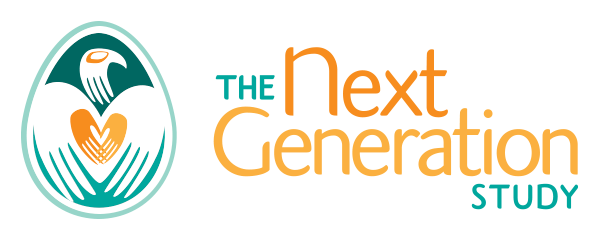
Diabetes Research

Clinical Birth Cohort Study
Information for Researcher
Background and Rationale:
The Next Generation Cohort was established in 2003 by Dr. Heather Dean. The cohort consists of Manitoba children of First Nations heritage who were born to a parent diagnosed with childhood-onset type 2 diabetes and are currently residing within the province. The cohort was established because the doctors at the Diabetes Education Resources for Children and Adolescents (DER-CA) noticed that the children born to parents with youth-onset type 2 diabetes were also developing youth-onset type 2 diabetes, but at a younger age than their parents and wanted to know why and what could be done about it. From 2003 to 2010, the cohort recruited offspring of mothers with childhood-onset type 2 diabetes followed at the DERCA. In 2010, the cohort was expanded to include the offspring of fathers with childhood-onset type 2 diabetes. In 2012, Dr. Brandy Wicklow under the mentorship of Heather Dean took over the leadership of the study, and the study was further expanded to include additional measures of the prenatal and antenatal environment including the collection of trimester bloodwork and cord blood. In 2016, the study started to recruit mothers with gestational diabetes. In 2017, the study started to recruit mothers without any diabetes as a comparison group. The study has received CIHR funding until 2026.
First Nations children experience the highest rates of childhood-onset type 2 diabetes (T2D) and early renal disease worldwide. The pathophysiology of T2D and kidney disease in this population is poorly understood. Epidemiology studies revealed two potent risk factors for T2D and renal disease in this population: (1) In utero exposure to maternal T2D and (2) a specific HNF1a gene variant. Our proposed project meets the objectives by:
- Elucidating previously undefined mechanisms (clinical cohort phenotyping, animal model and cellular developmental physiology, epigenetics) that control the onset and progression of type 2 diabetes and early renal disease in First Nations children, considering sex and gender.
- Developing new targets for prevention and treatment, informed by the unique developmental pathophysiology associated with the most significant risk factors identified to date, in utero T2D exposure and the HNF1a variant.
Overarching Hypothesis
- Exposure to T2D in utero impairs epigenetic regulation of cell and kidney development in offspring via epigenetic transmission, leading to cell dysfunction, T2D, and renal complications.
- The HNF-1aG319S variant impairs cell and kidney development, leading to cell and renal dysfunction.
- The combined exposure of the HNF-1aG319S variant and in utero T2D exposure, hastens cell failure and renal dysfunction contributing to childhood-onset T2D and early renal complications.
Plan for the Program of Research:
We will leverage an existing birth cohort of First Nations mothers with T2D and their offspring (The Next Generation) with previously collected blood and urine samples from offspring at birth, a previously developed rodent model of diabetes in pregnancy, a unique knock-in mouse model of the G319S variant, and existing stem cell platform to address the following translational aims:
- Aim 1: To define the mechanisms by which exposure to T2D in utero and the G319S variant impact b-cell development and function.
- Aim 2: To define the mechanisms by which exposure to T2D in utero and the G319S variant impact kidney development and function.
- Aim 3: To determine the role of epigenetic programming in transmitting in utero T2D exposure to b-cell and kidney dysfunction.
Deliverables, Significance, and Impact:
Incidence rates of childhood-onset T2D in First Nations children are the highest reported rates worldwide. In partnership with community knowledge users, patients and families, we have developed this research program to address knowledge gaps and research priorities, including:
- Early detection of T2D and renal complications to facilitate effective screening/prevention strategies; and
- A greater understanding of the pathophysiology of T2D and renal disease in these high-risk children to inform specific treatment targets. Our longstanding partnerships between clinical researchers, basic scientists, and patients and community members will ensure clinically meaningful, patient-relevant discoveries which are readily translated to future research and clinical practice.
Our Team and Environment:
We are a multidisciplinary, highly synergistic team of clinical and basic scientists, with a proven track record of successful collaboration. The research team includes clinician-scientists (B.Wicklow, E.Sellers, and A.Dart) with expertise in type 2 diabetes and renal disease in children, and basic scientists (C.Doucette, F.Lynn, and P.Geraldes) with expertise cellular and animal models of islet development and function, HNF-1a biology and renal development and function. Epigenetic studies will be led by an early career researcher, Dr. Jones, who has expertise in the proposed analyses. We are involved with provincial and national diabetes and islet networks, DREAM and CIRTN respectively, which provide access to funding, mentorship, and trainee support. Our team has access to state-of-the-art clinical and basic science infrastructure and supports through the Children’s Hospital Research Institute of Manitoba (www.CHRIM.ca), BC Children’s Hospital Research Institute, the University of Manitoba Faculty of Medicine Imaging core, and specialized equipment and infrastructure from Université de Sherbrooke.
